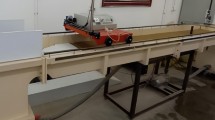I am going to cite a far worthier thing—
the master of all the master`s experience.
…neither of human investigations can claim to be the genuine science if it does not use mathematical proves.
Leonardo da Vinci
Abstract
Debris flows are one of the most dangerous and common hydrological phenomena in mountainous regions. They are extremely various in their type and character, but they are always mountain flows consisting of a mixture of water and loose-fragmental debris. The problem of calculation and forecasting the mudflows still remains intractable. There are several reasons for that: Firstly, the representatives of the whole spectrum of the Earth Sciences (Hydrology, Geology, Geomorphology, Geography, Mechanics, Rheology) deal with this problem from their point of view. Secondly, systematic monitoring of passing debris flows are currently held only in several countries only (USA, Canada, Austria, Switzerland, Japan, China), because they require significant funding. Thirdly, the calculation methods, having been accepted for the present time, give certain errors. In this article, the results of the artificially triggered debris flow experiments conducted in 1972–1976 in the Chemolgan river basin, organized by the Kazakh Research Hydrometeorological Institute are described. These were the first full-scale experiments with the detailed recording of the numerous debris flows characteristics ever conducted. The movie is attached as supplementary material to the Editorial of the Special Issue. The information about the used measurement equipment, the obtained characteristics of debris flows, the debris flow classification accepted as a result of the experiments is given. Conducting such experiments in nature allowed us to assess various aspects of the formation of these natural phenomena and made it possible to build the mathematical models of the debris flow processes.



Similar content being viewed by others
References
Arratano M, Deganutti AM, Marchi L (1997) Debris flow monitoring activities in an instrumented watershed on the Italian Alps. In: Chen CL (ed) Proceedings of the 1997 1st international conference on debris-flow hazards mitigation: mechanics, prediction, and assessment; San Francisco, CA, USA. ASCE, New York, pp 506–515
Curry RR (1966) Observation of alpine mudflows in the Tenmile Range, central Colorado. Geol Soc Am Bull 77(7):771–776. doi:10.1130/0016-7606(1966)77[771:OOAMIT]2.0.CO;2
Gallino GL, Pierson TC (1984) The 1980 Polallie Creek debris flow and subsequent dam-break flood, East Fork Hood River basin, Oregon (USGS open-file report 84–578). U.S. Geological Survey, pp vi + 59
Genevois R, Tecca PR, Berti M, Simoni A (2000) Debris-flows in the Dolomites: experimental data from a monitoring system. In: Wieczorek GF, Naeser ND (eds) Debris-flow hazards mitigation: mechanics, prediction, and assessment. Proceedings of the second international conference. AA Balkema, Rotterdam, pp 283–291
Holmes RR, Over TM (2008) Assessment of flood Remediation with minimal historic hydrologic data: case study for a small urban stream. 4th international symposium on flood defence (ISFD4) on flood defence, managing flood risk, reliability, and vulnerability, Toronto, Ontario, Canada, 6–8 May 2008. http://ifi-home.info/isfd4/docs/May8/Session_1030am/Room_C_1030/Boneyard_Flood_defence_mtg_5_2008_holmes.pdf
Holmes RR, Westphal JA, Jobson HE (1990) Mudflow rheology in a vertically rotating flume. Proceedings of the international symposium on hydraulics/hydrology of arid lands and 1990 national conference on hydraulic engineering, San Diego, CA, USA. ASCE, Boston, pp 212–217
Lin CW, Shieh CL, Yuan BD, Shieh YC, Liu SH, Lee SY (2004) Impact of Chi-Chi earthquake on the occurrence of landslides and debris flows: example from the Chenyulan River watershed, Nantou, Taiwan. Eng Geol 71(1–2):49–61. doi:10.1016/S0013-7952(03)00125-X
McArdell BW, Bartelt P, Kowalski J (2007) Field observations of basal forces and fluid pore pressure in a debris flow. Geophys Res Lett 34(7):L07406. doi:10.1029/2006GL029183
Parsons JD, Whipple KX, Simoni A (2001) Experimental study of the grain-flow, fluid-mud transition in debris flows. J Geol 109(4):427–447
Rickenmann D, Weber D, Stepanov B (2003) Erosion by debris flows in field and laboratory experiments. In: Chen CL (ed) 3rd international conference on Debris-flow hazards mitigation: mechanics, prediction, and assessment; Davos; Switzerland; 10 Sept 2003 through 12 Sept 2003, vol 2. Millpress, Rotterdam, pp 883–894
Savage SB, Lun CKK (1988) Particle size segregation in inclined chute flow of dry cohesionless granular solids. J Fluid Mech 189:311–335. doi:10.1017/S002211208800103X
Shieh CL, Chen YS, Tsai YJ, Wu JH (2009) Variability in rainfall threshold for debris flow after the Chi-Chi earthquake in central Taiwan. Int J Sediment Res 24(2):177–188. doi:10.1016/S1001-6279(09)60025-1
Stepanov BS, Zukerman IG (1983) K modeli erozionno-sdvigovogo selevogo protsessa [Toward a model of erosion-shear debris flow process. In: Selevye potoki [Debris flows], Iss. 7. Gidrometeoizdat, Moscow, pp 39–46 (in Russian)
Suwa H, Okuda S (1983) Deposition of debris flows on a fan surface Mt. Yakedake, Japan. Zeitschrift fur Geomorphologie, Supplementband, 46, pp 79–101
Suwa H, Okuda S, Yokoyama K (1973) Observation system on rocky mudflow. Bull Disaster Prev Res Inst Kyoto Univ 23(3/4):59–73
Turnbull B, Bowman ET, McElwaine JN (2015) Debris flows: experiments and modelling. Comptes Rendus Phys 16(1):86–96. doi:10.1016/j.crhy.2014.11.006
Van Steun H, Coutard JP (1989) Laboratory experiments with small debris flows: physical properties related to sedimentary characteristics. Earth Surf Process Landf 14(6):587–596. doi:10.1002/esp.3290140614
Vinogradov YB (1980a) Etyudy o selevykh potokakh [Sketches on debris flows]. Gidrometeoizdat, Leningrad, p 144 (in Russian)
Vinogradov YB (1980) Transportnyi i transportno-sdvigovyi selevye processes. Model’ so sredotochennymi parametrami [Transport and transport-shear debris flow processes. The model with lumped parameters]. In: Selevye potoki [Debris flows], Iss. 4. Gidrometeoizdat, Moscow, pp 3–20 (in Russian)
Yang QQ, Cai F, Ugai K, Yamada M, Su ZM, Ahmed A, Huang RQ, Xu Q (2011) Some factors affecting mass-front velocity of rapid dry granular flows in a large flume. Eng Geol 122(3–4):249–260. doi:10.1016/j.enggeo.2011.06.006
Yang QQ, Su ZM, Cai F (2014) DDA Simulations of large flume tests and large landslides triggered by the Wenchuan earthquake. J Appl Math Phys 2(6):359–364. doi:10.4236/jamp.2014.26043
Author information
Authors and Affiliations
Corresponding author
Rights and permissions
About this article
Cite this article
Vinogradova, T.A., Vinogradov, A.Y. The experimental debris flows in the Chemolgan river basin. Nat Hazards 88 (Suppl 1), 189–198 (2017). https://doi.org/10.1007/s11069-017-2853-z
Received:
Accepted:
Published:
Issue Date:
DOI: https://doi.org/10.1007/s11069-017-2853-z




